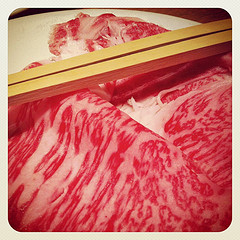
flic.kr/p/aBxa1o
Lecithin is the new darling of modern health reports and journals. But, is lecithin the right choice for you?
Many of the components found in lecithin are essential for your good health. Just one tablespoon of lecithin granules, or about 7.5 grams, contains about 1700 mg of phosphatidylcholine, 2,200 mg of essential fatty acids including linoleic acid and 1000 mg of phosphatidylinositol. Each of these important elements contributes to the overall value of lecithin.
Even though lecithin offers so many benefits, many people just don’t consume enough to boost their health. A deficiency of lecithin does not appear to have any adverse effects, yet a deficiency in choline, a component of lecithin, can lead to the development of cirrhosis, liver cancer and other serious illnesses.
If we are lacking in our lecithin intake, it may be due to the actual sources of lecithin. Prior to World War II, people eat more red meats, whole eggs, organ meats, whole milk with cream and dairy cream. All of these are excellent sources of lecithin. The components that make these foods so rich in lecithin are, however, the very reasons why so many people turn away from them. Modern research has shown that these foods are also rich in fat and calories, and we all know that these components can pose negative health risks.
These natural sources of lecithin can be a concern, but there are other options available. Some people choose lecithin supplements. The USDA’s Economic Research Service reported that the average American consumer ate 12 fewer pounds of red meat in 1996 than 20 years ago. The study further suggested that the average American consumed just 3 grams per day of lecithin, in spite of all of natural sources available. For the sake of our good health, we must take advantage of other sources of lecithin to incorporate this valuable element to our everyday diets.
Natural Soy Foods
Soy is the choice of many people wishing to boost their lecithin intake. Most commercially sold sources of lecithin are, in fact, derived from soybean oil. The consumption of soy increases annually in the United States, which has attributed to an overall increase in lecithin intake, as well. The versatility of soy contributes to a number of lecithin source options. Soybeans can be boiled or roasted. They can be eaten whole, or processed. Soy is used as a base for a variety of popular foods, including soy milk, tofu, soy sauce, meat alternatives, soybean oil and soy flour.
Lecithin Supplements
Many people choose to take dietary supplements as a means of boosting lecithin intake. It is an easy and excellent way to increase lecithin to a healthy level. Just one tablespoon of lecithin granules can contain up to 1,725 mg per serving. Lecithin supplements in soft gel capsules, on the other hand, may contain as little as 180 mg per serving. That’s why it is so important to check the concentration of lecithin before choosing a supplement. Many sources suggest that lecithin granules are the best choice, because the body will readily synthesize the high percentage of phosphatidylcholine into the essential nutrient choline.
If you, like most people, are not getting enough lecithin in your daily diet, speak with your dietician or health care advisor. Learn about the many benefits of lecithin, and find the sources of lecithin that are best for you.
Tagged with: lecithin benefits • lecithin from soya
Filed under: Lecithin